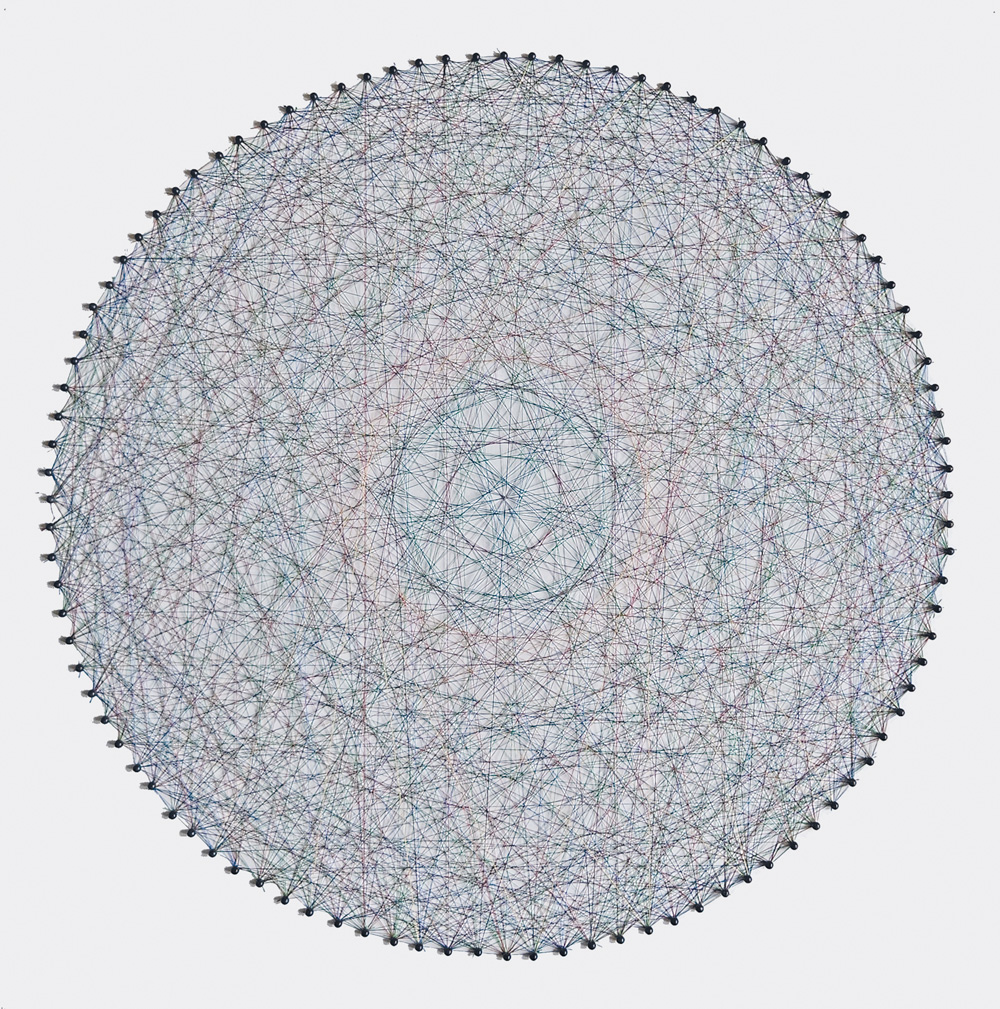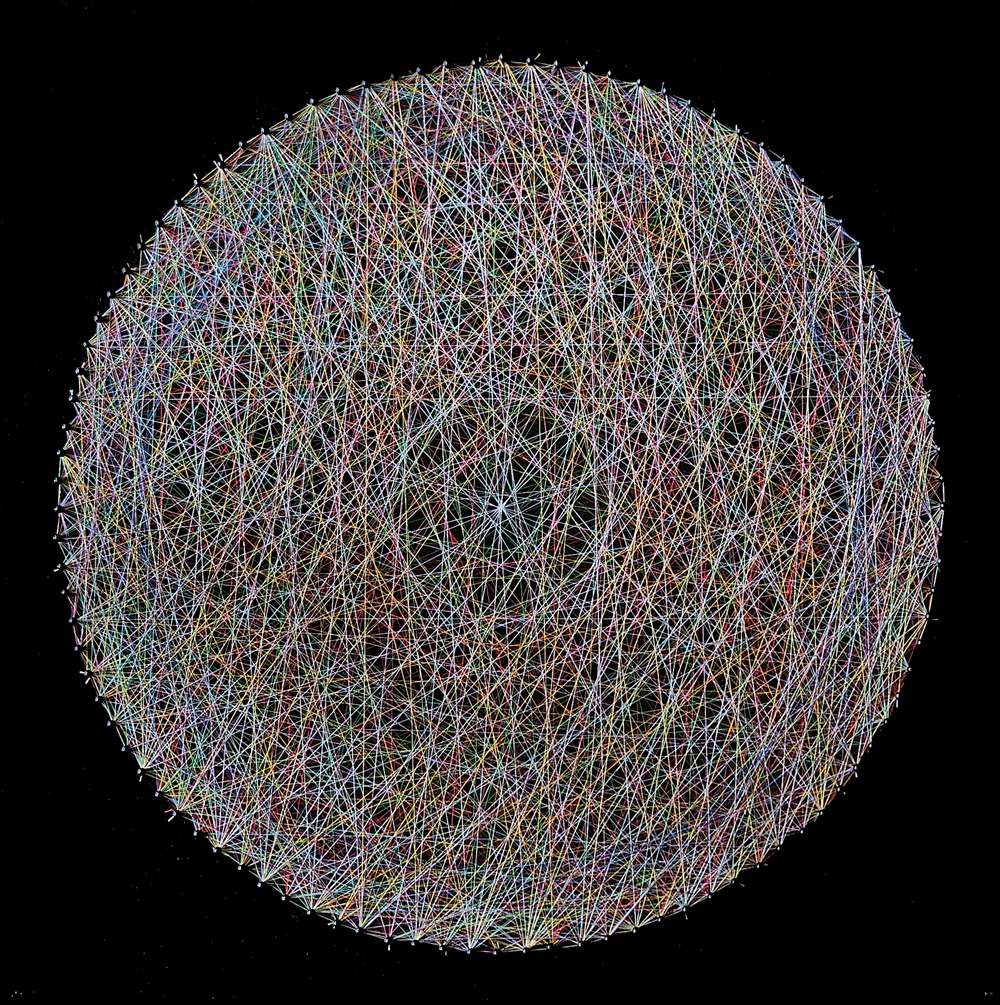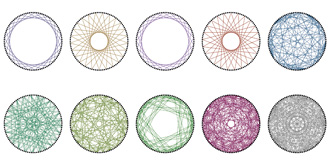| Stomachion | |||||
 |
Higmann-Sims-Graph The Higman-Sims graph is a highly symmetric and intriguing graph from graph theory and combinatorics, independently discovered in 1968 by mathematicians Donald G. Higman and Charles C. Sims. Symmetric means that it remains unchanged under certain rotations and reflections in space. It has a total of 44,981,536 automorphisms, meaning there are 44,981,536 bijective mappings of the nodes onto themselves that preserve the edges of the graph and leave the graph unchanged. This high number of symmetries makes it very interesting for network and communication technology, as well as in traffic planning, where information flows quickly and efficiently through networks with high node degrees. Moreover, the Higman-Sims graph also finds practical applications in cryptography, particularly in the construction of encrypted codes. It is also widely used in mathematical research and theoretical computer science.
|
Graphic representation of the Higman-Sims graph using push pins and satin thread on lightweight board (60x60 cm). |
|
|
Left: Graphical representation of the Higman-Sims graph on a black background. The Higman-Sims graph is a mathematical object with 100 nodes and 1100 edges, where each node is connected to 44 other nodes in the graph. It can be visualized as a network of 100 points, with each edge connecting two of these points. Each node has exactly 44 edges emanating from it, connecting it to 44 other nodes. Above: Representation of the construction method of the Higman-Sims graph by the New Zealand mathematician and computer scientist Paul R. Hafner. |

